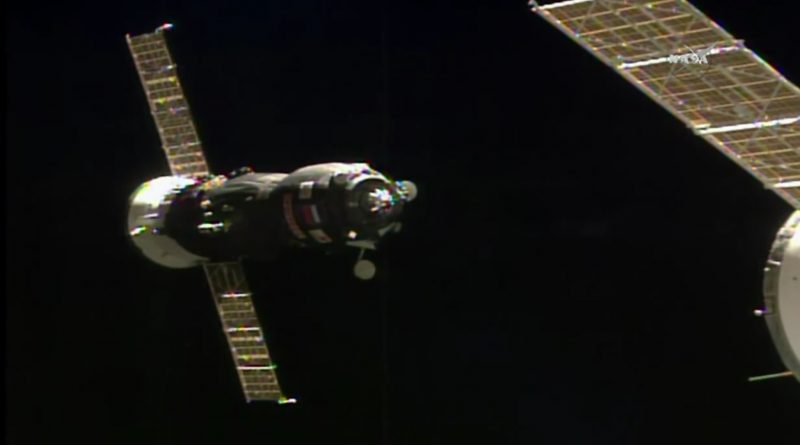Progress Resupply Craft pulls into Port at ISS after flawless Rendezvous
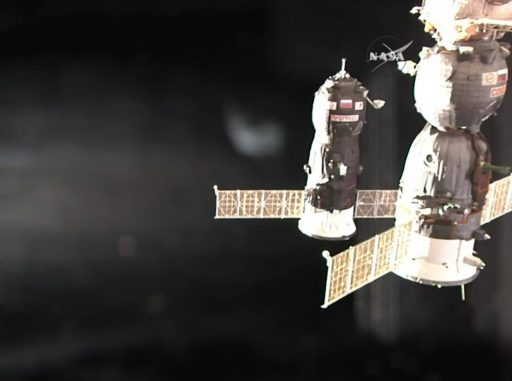
Russia’s Progress MS-05 cargo spacecraft completed a fully automated docking with the International Space Station Friday morning, marking the return of Russian resupply missions after the Progress MS-04 launch failure in December left an unusually long gap in the typically near-continuous presence of a Progress craft at ISS.
Friday’s high-altitude link-up occurred 400 Kilometers above the Pacific Ocean after a smooth approach by the Progress craft to its orbital parking space on the Pirs Docking Compartment where the vehicle will reside for the next four months to facilitate the transfer of 2.4 metric tons of supplies for the Russian Segment of ISS.
Progress MS-05 was lifted into orbit on the retirement flight of the Soyuz U rocket that closed out a career of 44 years as the world’s most-flown and longest-serving orbital launch vehicle. Soyuz U leapt off its Baikonur launch pad at 5:58 UTC on Wednesday for one final climb, providing Progress MS-05 with a smooth nine-minute ride – also rehabilitating the launcher’s third stage implicated in the December 1st launch failure that claimed the loss of Progress MS-04.
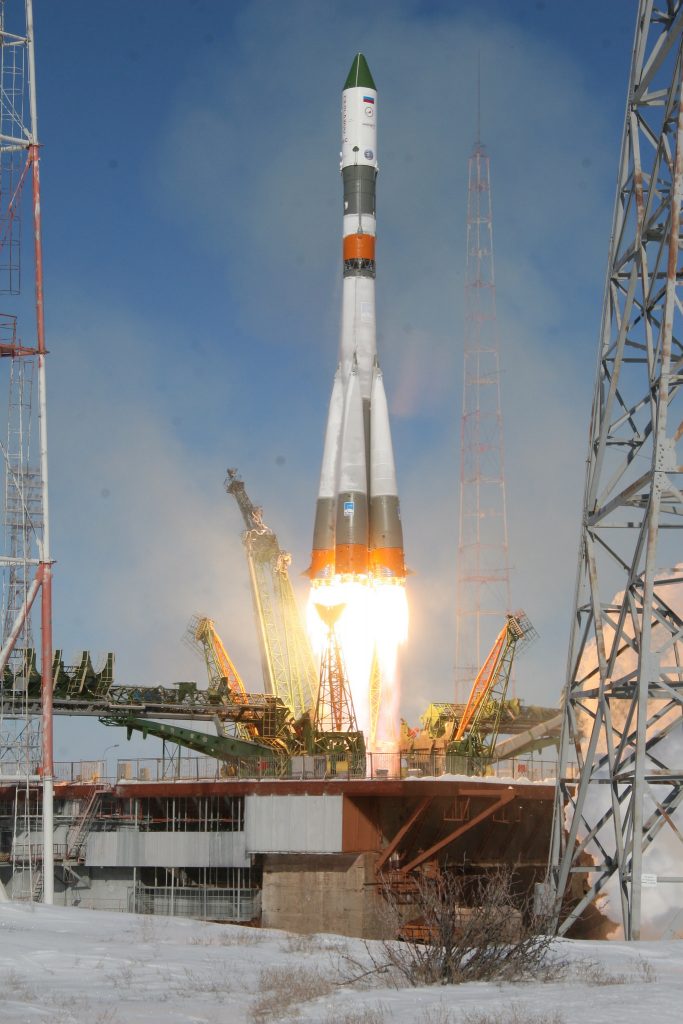
Soyuz U ended its career with a perfect injection of the 7,200-Kilogram Progress spacecraft into a 200-Kilometer orbit, starting out 200 Kilometers below and nearly an entire orbit behind the Space Station but catching up quickly. Immediately after its release into orbit, Progress MS-05 deployed its solar arrays and KURS navigation antennas and began firing its thrusters to enter a stable orientation for communications through Russia’s Luch Data Relay Satellites – a new feature of the MS series of spacecraft that began flying in December 2015.
Progress MS-05 used the established 34-orbit rendezvous profile, taking two days to reach its orbital destination. This mission marks the 158th Progress flight in a program that supported Russia’s Salyut and Mir space stations before becoming a workhorse for the ISS program, conducting its 68th mission in support of ISS.
Heading off on its first lap around the planet, Progress went through a detailed checkout of its main propulsion system while ballistics specialists recalculated the spacecraft’s maneuvering profile based on achieved orbital parameters. The KTDU-80 propulsion system fired up on the spacecraft’s third orbit around Earth, boosting the Progress into an orbit of 295 by 315 Kilometers – around 100km below the Station’s orbit, still closing in from behind. A small orbital correction positioned the spacecraft for the initiation of the Automated Rendezvous Sequence some 110 minutes prior to the spacecraft’s planned docking.
Entering the rendezvous sequence, Progress completed the final ground-targeted burn known as DV-4, putting the vehicle on a trajectory into the 200-Kilometer communications zone around ISS where relative navigation is possible through the KURS radio navigation system.
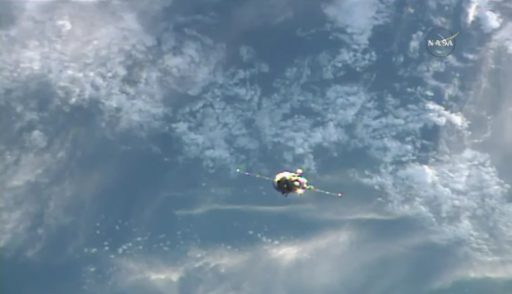
KURS-NA powered up 95 minutes ahead of the planned docking time along with its KURS-P counterpart on the Space Station to first allow the Progress to use its AO-753A phased array antenna to detect the Station’s signal and orient the Progress for pitch and Line of Sight (LOS) angle measurements. As Progress got closer, two ASF-1 antennas came into action to deliver range, range rate and angular measurements.
Guided by the trusted KURS System, Progress initially aimed for a point one Kilometer from ISS to preserve the option of a passive abort, simply flying past ISS in case of a problem during rendezvous. KURS went through a pair of tests at 80 and 15 Kilometers to verify accurate navigation data was being collected.
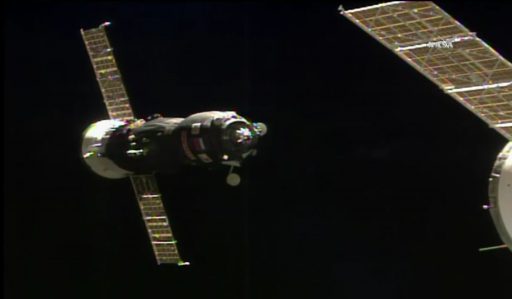
Aboard the Space Station, Sergei Ryzhikov and Oleg Novitsky were manning the TORU workstation from where they could remote control the Progress spacecraft in the event of an issue during the close approach to bring it in for a manual docking. The TORU command link was verified when Progress was still 5 Kilometers from ISS.
Progress then hit the brakes via three impulse maneuvers by the main engine and the smaller DPO thrusters to set up for the flyaround that began at a distance of 400 meters to ISS. The slow, 57-degree flyaround lined the Progress up with the Pirs module and a roll maneuver positioned the craft’s solar arrays for the docked mission. Progress showed excellent alignment and stability toward the end of the flyaround and Mission Control decided to completely forego the planned Stationkeeping period and command the spacecraft to final approach mode straight away.
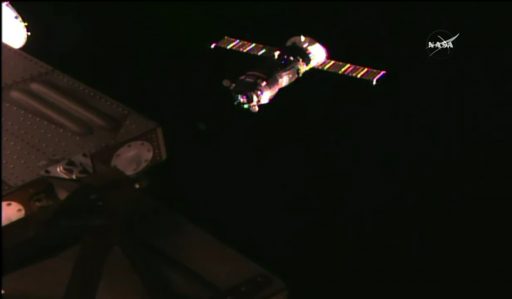
Progress initiated a closing rate of 0.8 meters per second for a straight-in approach to the Pirs module from a distance of 180 meters. The docking target remained in the center of the crosshairs as Progress used its DPO thrusters to keep itself on course, slowing down to 0.1m/s prior to contact.
Contact and Capture was confirmed at 8:30 UTC as Progress and ISS flew over the South Pacific Ocean, becoming the second resupply ship to reach the Station in under 24 hours following Dragon’s successful arrival on Thursday. Upon sensing contact, ISS was commanded into Free Drift with all thrusters disabled while Progress fired its X-axis thrusters to push in and ensure capture latches would engage for a safe docking.
The docking probe was retracted within minutes of the docking and hooks in the interface closed to form a hard mate between Progress and Pirs. Progress was then transferred to ISS power supply and the vestibule between ISS and Progress was pressurized for a period of leak checks before the Russian crew members can open the craft’s hatch later on Friday.
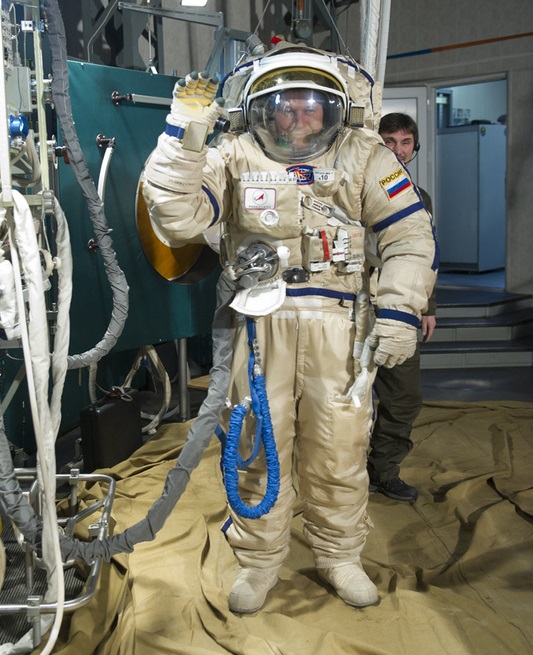
Progress MS is delivering 2,395 Kilograms of cargo to the Space Station – 425kg of refueling propellant for ISS, 420kg of water, around 23kg of pressurized oxygen to top up the Station’s atmosphere and roughly 1.5 metric tons of dry cargo. Among the dry cargo, Progress is delivering a 360° video camera setup, experiments looking at the effects of spaceflight on different viruses, and a number of special goodies for the ISS crew including 50 portions of oatmeal, smoked sausage, and 15 Kilograms of fresh fruit (apples, oranges, grape fruit).
Aboard Progress MS-05 is the first of the improved Orlan-MKS space suits to reach the Space Station after the first flight unit was lost in the MS-04 failure. Orlan-MKS has been designed to be more robust than their predecessors while being much easier to use and operate, cutting time from the typical preparations flow for each spacewalk carried out on ISS.
The suit has been built for up to 20 uses over a service life of six to seven years, capable of supporting extended spacewalks of up to nine hours. Changes to the older suits include the introduction of an automated thermal control system, a suit management computer that controls the temperature & monitors the suit’s life support functions, and a new, more durable material in the suit’s protective outer layers.
Progress MS-05 is set for a four-month stay at Pirs, its departure is currently penciled in for July 13 to make room for the MS-06 spacecraft that is scheduled to blast off from Baikonur one day later if the manifest remains as it stands today.

